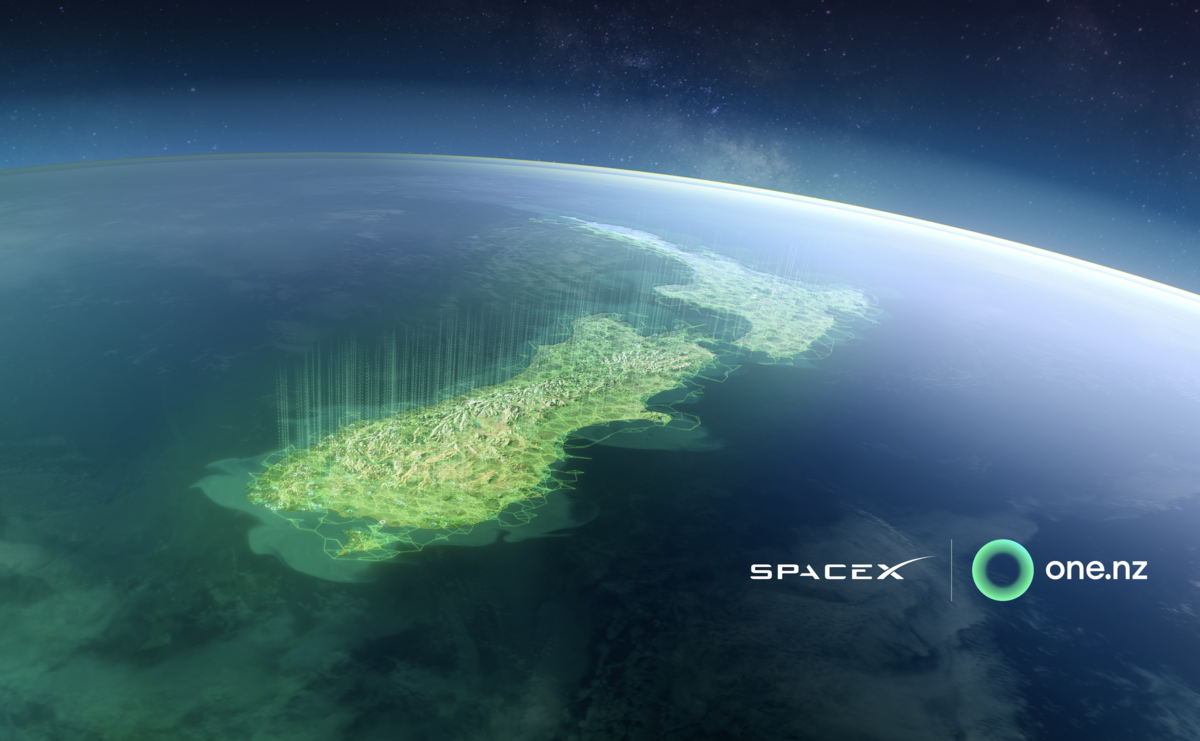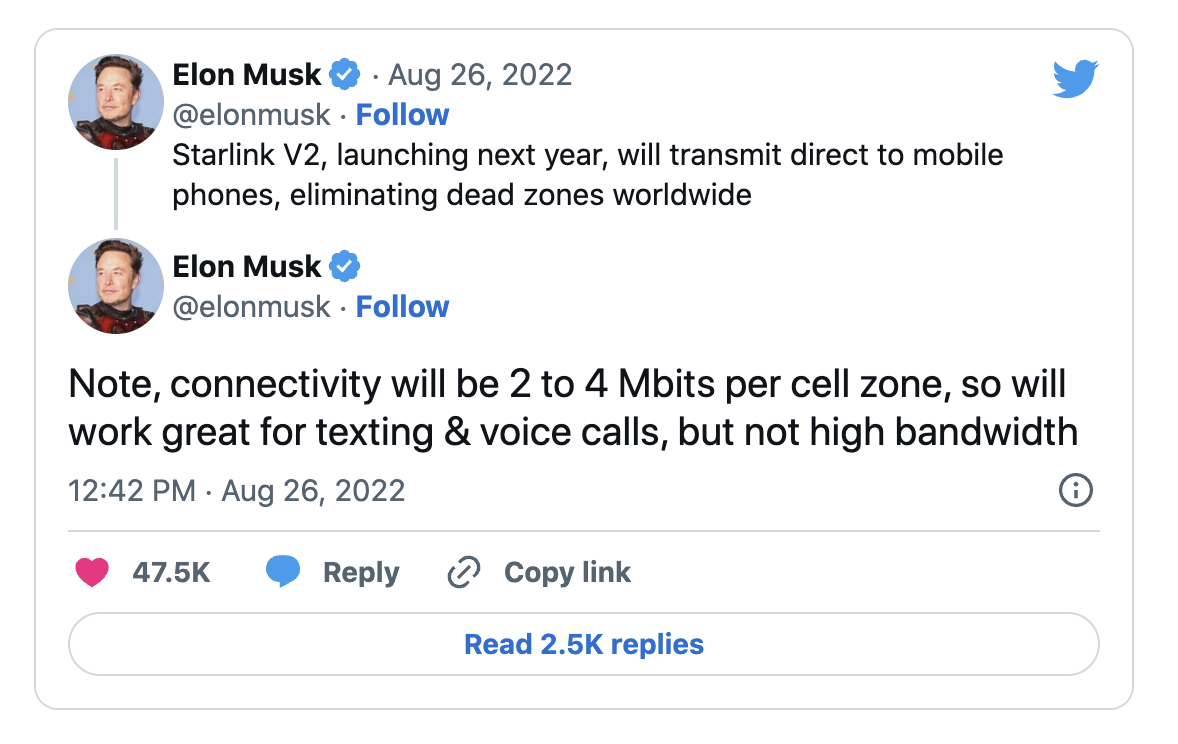Goodbye mobile blackspots? One, 2degrees gear up for satellite to mobile service
If you want to make a call or text message in the most remote and rugged parts of New Zealand you’ll generally be out of luck, unless you have a satellite phone.
Now two of our mobile network providers One (formerly Vodafone New Zealand) and 2degrees, have announced partnerships with satellite network operators to provide mobile service anywhere in New Zealand and its territorial waters, leveraging low Earth orbit (LEO) satellites that connect directly to mobile phones.
One’s partnership is with SpaceX’s satellite broadband provider Starlink, which surged in popularity in the way of February’s Cyclone Gabrielle taking out communications in areas including Hawkes Bay and Gisborne. One said at a launch event in Auckland today that its service will be available from late next year.

2degrees has teamed up with global satellite provider Lynk. The services will initially focus on text message communication (including MMS messages) due to the limited bandwidth available. (2 - 4 megabits per second per cell zone according to SpaceX CEO Elon Musk).
“This means the immediate communication issues experienced after Cyclone Gabrielle will be confined to history,” says One New Zealand CEO Jason Paris, as the mobile network operator celebrated its first official day under the new brand.
“It will give our customers more freedom with 100 percent coverage across the country and means New Zealanders and New Zealand businesses are safer with us.”
Spectrum allocated
One has dedicated part of its mid-band radio spectrum to enable the service satellite to mobile service. Paris said that while One’s network covers “98% of the places New Zealanders live and work… almost 50% of the landmass still has no coverage”.
“When the service goes live, there will be coverage across the country whether you’re out on your boat, climbing a mountain, fixing a remote road, or on your farm – you and your businesses are safer with us.”
That offers a major safety boost for hikers, boaties and people working in remote locations. But it will also provide some much-needed network resilience in the wake of natural disasters that take cell towers and other telecoms infrastructure offline.
2degrees seems to be a bit further behind in its plans, with “initial trials” with Lynk set to begin shortly.
“Over time, we expect 2degrees customers will be able to send text messages and ultimately get voice calls and basic data services from anywhere in New Zealand,” he said.
“Of course as satellite-to-cell develops, it is hoped that this technology could also play an important role in keeping customers connected following major events such as we’ve seen recently.”
Satellite to mobile: How does it work?
While connectivity specifications, pricing and availability haven’t been revealed yet, a hugely convenient aspect of the technology is that it doesn’t require a satellite-enabled mobile phone or hardware upgrade.
“Lynk is building, launching, and operating a constellation of LEO satellites called ‘Lynk the World (USASAT-NGSO-10)’, which acts as cell towers in space and provides connectivity directly to mobile phones without any modifications to either the MNO network or customer devices,” James Alderdice, Vice President Asia-Pacific at Lynk, said.
SpaceX partnered with T-Mobile in August to develop satellite-to-mobile voice services to be delivered form its second-generation satellites. At the time, SpaceX CEO Elon Musk gave some insights into how Starlink satellites are capable of picking up mobile signals. As Engadget reported:
“When asked how his company had to tweak Starlink satellites for the service to work, Musk said SpaceX had to design a very big, extremely advanced antenna that has the ability to pick up very quiet signals from your cellphone. The company is still currently working on it in the lab, but Musk said SpaceX is confident that it's going to work in the field.”

Musk confirmed in a Twitter exchange that the satellite-to-mobile service will be made available to Tesla vehicles in the US too - currently, the cars connect via the AT&T mobile network for software and firmware updates and to send data to and from the car.
Facing a connectivity crunch on its satellite network, Starlink has developed its V2 Mini satellites offering boosted capacity per satellite - and began launching them in February. SpaceX has approval to launch 7,500 of them. A larger V2 satellite has also been developed, but will need to wait for the SpaceX Starship rocket to be delivered into orbit.
